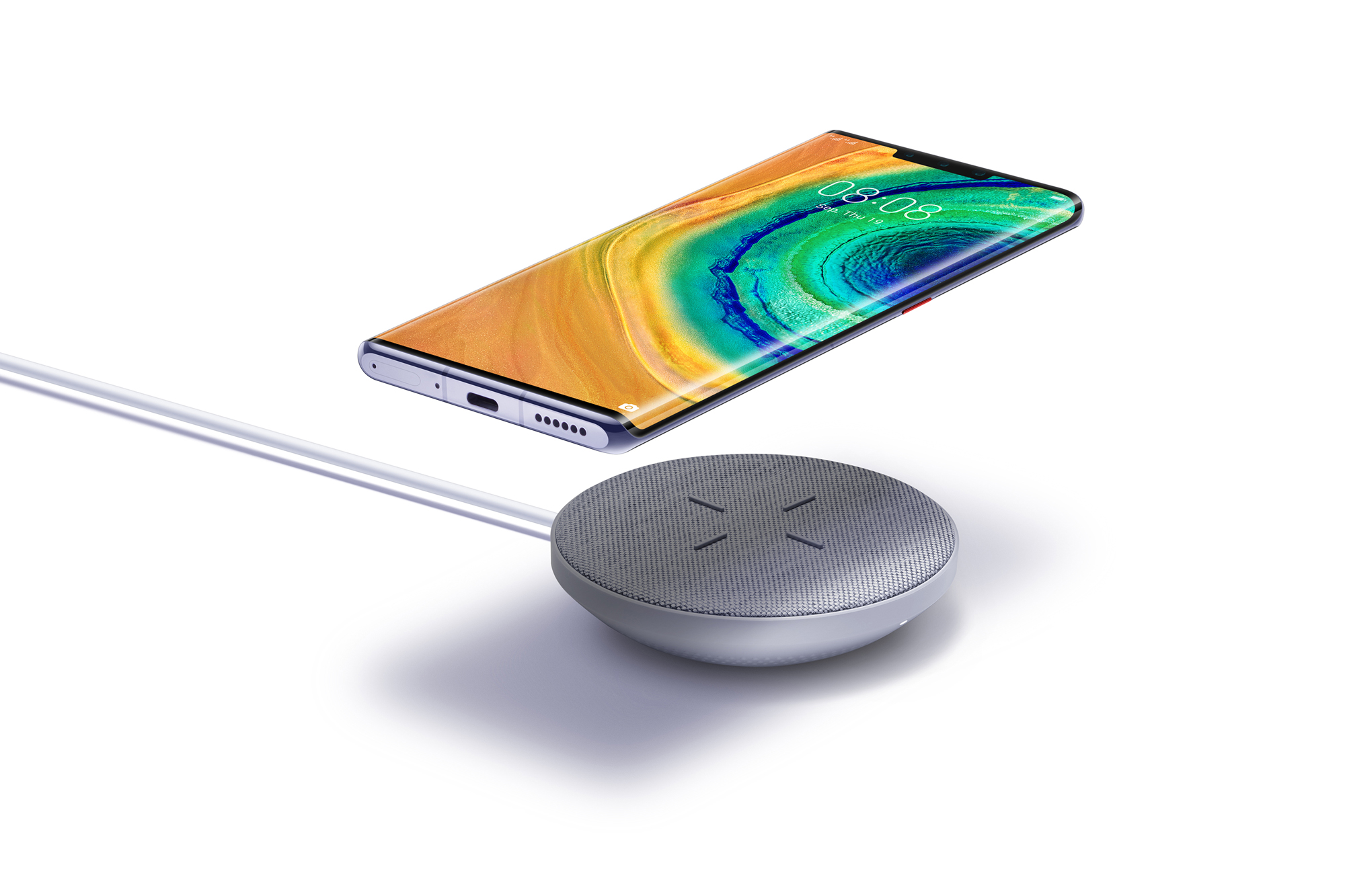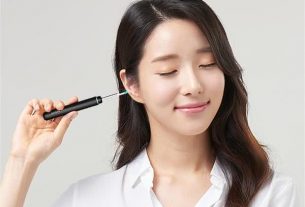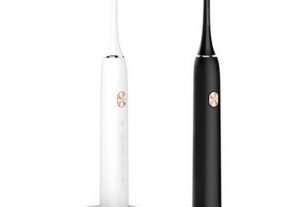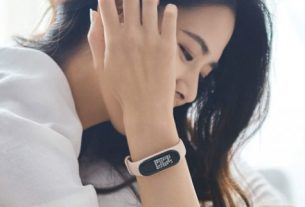On September 26th, Huawei Mate30 and Mate30 Pro were officially released in Shanghai. The whole series of support for 40W wired super fast charging and 27W wireless super fast charging made us very impressed! Not to mention 40W wired fast charging, 27W wireless fast charging makes Xiaobian feel bloody. These two models are currently Huawei’s fastest wireless charging phones. How does the actual wireless charging performance, Author has got Mate 30 Mobile phone, the answer will be revealed for everyone today.
The front of the Huawei Mate 30 uses a 6.62-inch OLED full screen with a resolution of 2340 × 1080. It adopts a new generation of Kirin 990 flagship chip and adopts 7nm process. Built-in 4200mAh battery, support 27W wireless super fast charge.
Because it supports 27W wireless super fast charging, Huawei released a 27W wireless super fast charging wireless charger that matches it.
Use Huawei 40W charger (Huawei Mate 30 series standard charger) as input, use ChargerLAB POWER-Z KT001 portable tester to monitor the input end, Huawei original 5A data cable as a power cable to connect to Huawei 27W wireless charger.
After the Huawei Mate30 is placed on the wireless charger, the screen displays multiple lightning icons and the current battery level, and a line of prominent “Wireless Super Fast Charge” appears below it, indicating that 27W super wireless charging is in progress.
At this time, the input power is about 34.1W (9.9V3.5A). After efficiency conversion, the final wireless charging power can indeed reach Huawei’s 27W super wireless fast charging level.
In addition, Huawei has previously released a 15W wireless charger. Let’s take a look at how it will charge the Mate 30.
The Huawei Mate30 is placed on the wireless charger. At this time, the input power is about 13.7W (8.92V1.53A). After efficiency conversion, the final wireless charging power can indeed reach the Huawei 10W wireless fast charge level. Mate30 supports Huawei 10W wireless fast charge.
The following editor will use Huawei 27W super fast charge wireless charger and 15W wireless fast charge charger to fully charge Mate 30 test to see how it performs. In this test, ChargerLAB Power-Z KM001 was used to monitor the data of the host computer, and the following table was made.
The first is to use the Huawei 27W super fast wireless charger. When the Mate 30 starts charging, the Huawei wireless charger turns on the 27W wireless output mode, and the input power soars up to 36W. As the temperature rises, this stable The high power lasted for about 5 minutes, and then the input power began to fluctuate, ranging from 16W to 30W. As a whole, most of the input power of Huawei wireless chargers was maintained at about 16 ~ 30W. After charging for 1 hour and 8 minutes The power is greatly reduced to enter the trickle charging mode, and the maximum power of the whole process is 36.45W.
Let’s take a look at the power increase of the Huawei Mate 30. In the high-power stage of the past five minutes, 10% of the power was charged, 44% of the power was charged in half an hour, and 87% of the power was charged in one hour. Hours and 30 minutes, this wireless charging speed is close to some mobile phone wired fast charging.
From the power curve, we can also see that the power of the mobile phone continues to rise rapidly, reaching 94%, and the speed slows down to enter trickle mode to obtain a fuller charge effect.
The next step is to use Huawei’s 15W wireless fast charger. When the Mate 30 starts charging, the wireless charger turns on the 15W wireless output mode, and the input power surges up to 13.88W. As the power starts to fluctuate, the fluctuation range is 11W ~ 14W And most of the full charge is maintained at this power stage; at the end of 1 hour and 41 minutes of charging, the power drops sharply and switches to trickle mode. The maximum power of the whole process is 14.78W.
Let’s take a look at the increase in the power of the Huawei Mate 30. The first five minutes were charged with 5% of the power, half an hour with 27% of the power, one hour with 53%, and one and a half hours with 82%. The whole process was time-consuming. 2 hours and 20 minutes.
From the power curve, we can also see that the power of the mobile phone continues to climb rapidly, reaching 92%, and the speed slows down into trickle mode to obtain a fuller charge effect.
Compared with Huawei 15W wireless fast charge charger, Huawei 27W super fast charge wireless charger uses Mate 30 to charge a lot faster, and the whole process takes nearly 1 hour. In addition, these two chargers will change to trickle charging mode when the Mate 30 is charged to 90% + power, so as to obtain a fuller charging effect, so the subsequent charging time will appear longer.
Summary of charging head network:
Mate 30 supports 27W wireless super fast charging, which is very fierce. The matching Huawei 27W super fast charging wireless charger is measured. The maximum power of the wireless charger input terminal can reach 36W. The 30W + high-power stage lasts for nearly 5 minutes. Most The time power fluctuates between 16 ~ 30W and performs well. In addition to 27W, it also supports 10W Huawei wireless fast charging protocol, consumers have one more choice when purchasing.
The Huawei Mate 30 has a 4200mAh battery capacity. Using the Huawei 27W wireless charger can charge 10% of electricity in five minutes, 44% of electricity in half an hour, and 87% of electricity in one hour. The entire process takes 1 hour and 30 minutes, and it performs very well. , Even faster than some mobile phones with wired charging, compared with the charging speed of Huawei 15W wireless charger, the advantages are more obvious.
In addition, whether it is a 27W wireless fast charge or a 10W wireless fast charge, the charging strategy will be switched after the charge reaches 90%, and the slow charge is performed in another low power trickle mode to achieve a fuller charging effect. Wireless charging technology has been developed for so many years. The introduction of high-power wireless charging technology has made the wireless charging of mobile phones from “usable” to “good use”, making consumers more willing to use wireless charging, and the daily use experience of mobile phones also has More changes.



